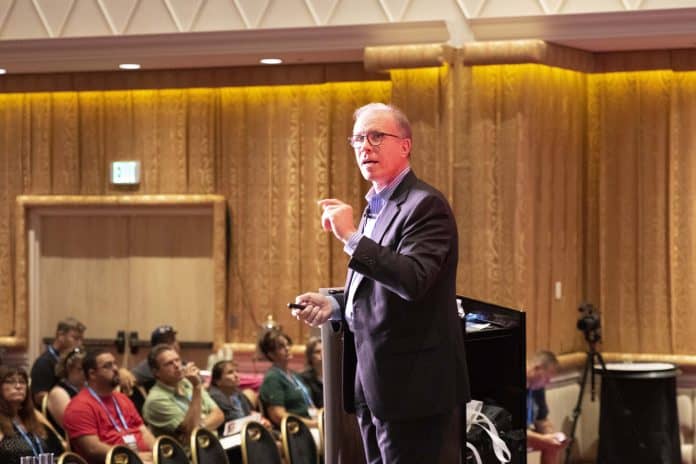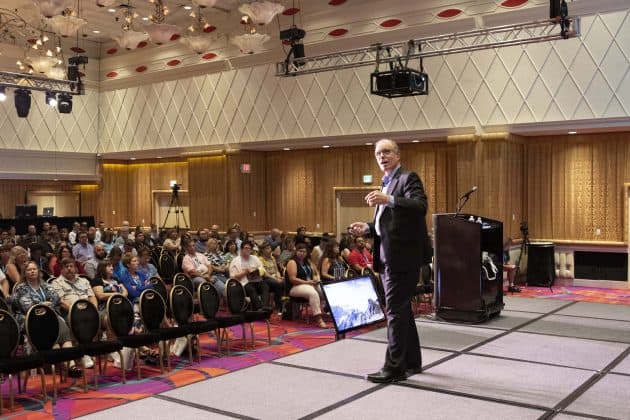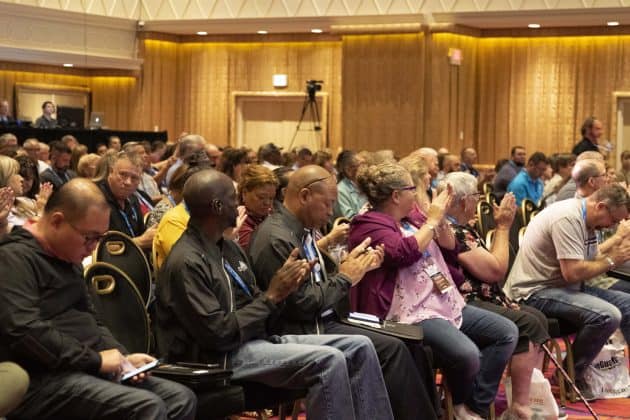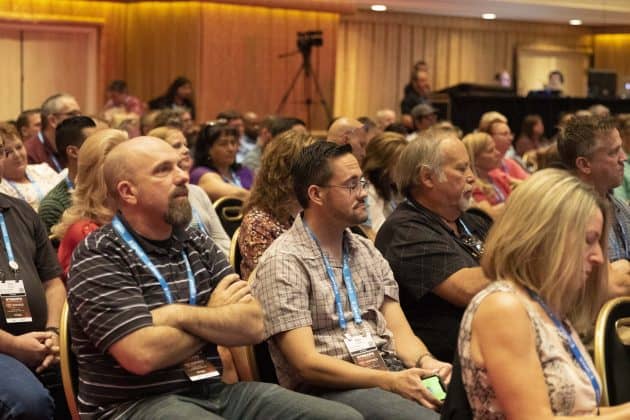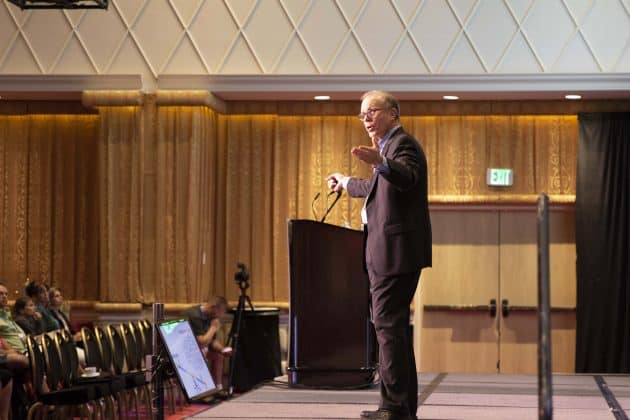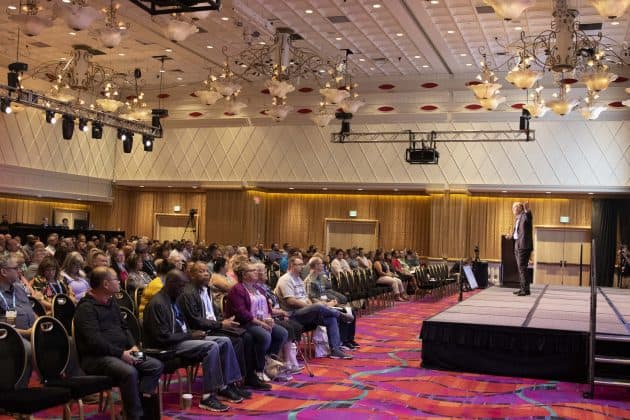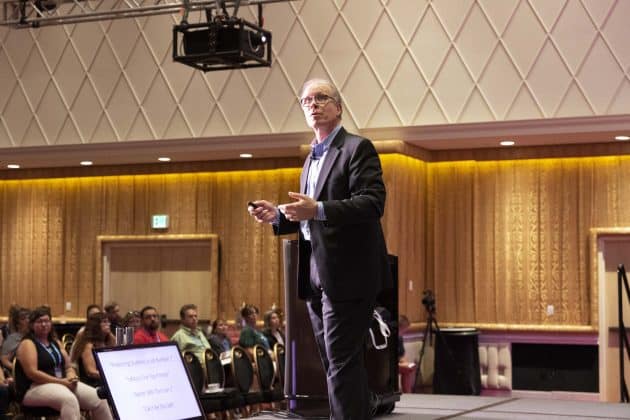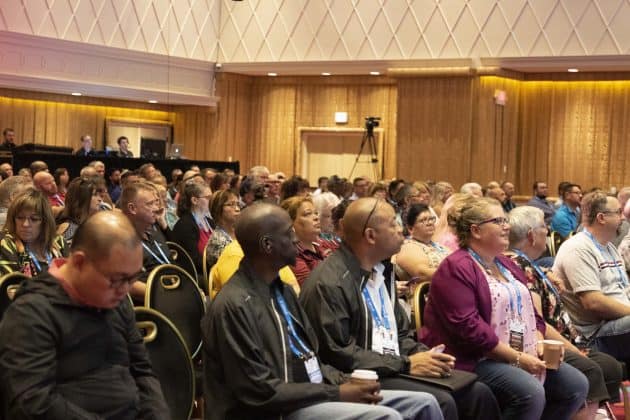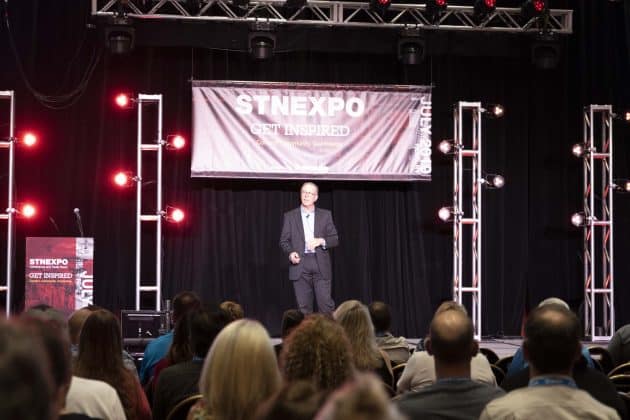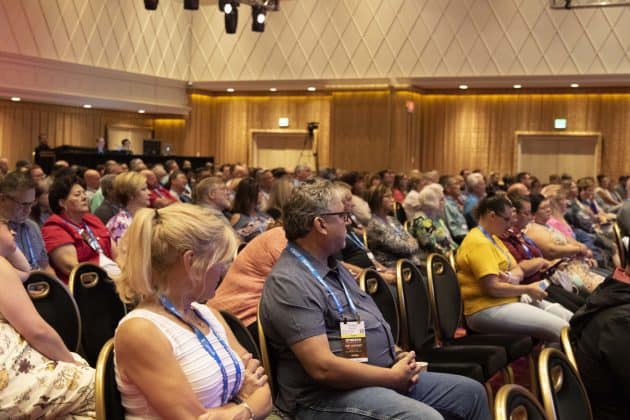The last keynote presentation of the STN EXPO in Reno featured author, speaker and consultant Les Nichols discussing how to make a safe organization and the steps that can be taken to get there. His talk, “The Complacency Conundrum: Why Organizations Fail to Prevent Tragedies,” addressed promoting a safety culture and implementing a safety change.
Nichols, who is president of R.L Nichols and Associates, has spent the past 25 years helping youth while he served in organizations that protect children and teens. Nichols shared the classic Aesop’s fable of a scorpion and a frog crossing the river.
In that story, the frog told the scorpion he would allow him to ride on his back while crossing the river, but only if the scorpion didn’t sting the frog and cause him to drown. The scorpion said he wouldn’t sting the frog, because he didn’t want to drown, either.
But half-way across, the scorpion stung the frog because, as he exclaimed as both sank to the bottom, it was in his nature.
Likewise, Nichols said that it is in some people’s nature to commit acts of violence, sexual assaults and more. But he followed up by claiming that all acts can be spotted and addressed before they happen.
A member of the audience was invited to share his story about his district near Salt Lake City. There had been quite a few suicide incidents there, and the administration started noticing a pattern with some of the students. They were loners, didn’t have any friends, ate lunch by themselves, and other characteristics similar to that.
As a result, the district started a program with the help of the student government. Those students would make a point to sit or talk with someone who was alone, and they were given incentives if they were observed going out of their way to do so.
One night, the attendee received a text alert from a student that someone was going to shoot up the school the next day. He followed through with his investigation and the student told him that the alleged perpetrator texted him, “Thank you for being my only friend and looking out for me. Don’t come to school tomorrow.”
Law enforcement and district officials were informed of the situation, and it turned out that the student in question had a loaded 9 mm handgun in his backpack with two boxes of bullets.
Changing the culture of the school district to befriend others and report anything suspicious helped to prevent a major school shooting.
Nichols then discussed a criminology study that found that three things have to come together, in order for a crime to take place. There has to be a suitable target (this can be a person or an object), there has to be a likely offender (they are always there, but they only show themselves when a crime presents itself), and a capable guardian is absent (whether this is a locked gate, an onlooker or the thought of getting caught).
Nichols then addressed safety strategies, and what organizations can to do to weed out the potential offenders from job applicants, to create a strong safety culture. Without a culture in place, Nichols said the strategies, if not guaranteed to fail, will fall short. Culture is the backbone of what keeps organizations running smoothly.
Then he asked the audience, “What is something your school does that changes the culture of safety?”
Attendees shared that they train their drivers to rely on their instincts. No matter how crazy or stupid the report might seem to be, they encourage their drivers to follow their instincts.
The drivers, for example, should keep students on the bus if they observe a potentially dangerous situation unfolding at a bus stop or at school. Or, they should document and report any incident that appears to be out of the ordinary. By drivers noticing something peculiar, they could save a situation from either escalating or keep it from happening.
One attendee noted that this relates to the Busing on the Lookout (BotL) workshop that was held the previous afternoon. The Truckers Against Trafficking program educates professional drivers on how to be on the lookout for suspicious activity that could signal human sex trafficking.
Bus drivers see the students every day and may be able to sometimes notice a difference in student behavior, appearances and attitudes. Even the adults picking up the students at the end of the day—are they the same ones who are always there? he asked.
Nichols referenced Heinrich’s Safety Pyramid of 1931. He said that for every one major injury, 29 minor injuries take place and 300 near-miss incidents happen. He added that we don’t think about it until it has become a headline. Instead, we need to get out in front of it and recognize these incidents before they happen.
Nichols noted that sometimes offenders progress through the system, and there could still be some bus drivers molesting young children. Organizations need to filter the problem, he said, and while some people fall through the cracks, organizations should encourage responsible people and discourage potential offenders from applying.
A process called self-selection can help make some offenders less likely to apply to your organization. When followed, the process can help weed out the offenders when you publish the application requirements, require disclosures, ask insightful questions, conduct multi-layer background checks, cross-check aliases and confirm addresses.
He also reported that there are four proven safety predictors:
- More types of observations
- More types of observers with different perspectives
- No top rating in safety (never setting the standards too low)
- Always finding a way to elevate the weak performances (no C-minus in safety, either)
Later in his presentation, Nichols challenged the audience to take action. He encouraged them to speak up and share their safety culture with each other, to help stimulate other ideas.
At the conclusion, Nichols recapped his presentation on 10 ways to improve, moving from a lucky organization to a great one:
1. Publish a safety vision statement
2. Adopt safety goals, objectives and measurable outcomes
3. Measure leading and lagging indicators
4. Benchmark against a better school district
5. Encourage, recognize and reward advocacy at all levels
6. Use safety scenarios as the primary teaching tool
7. More kinds of inspections and inspectors
8. No easy “A” /No “C-minus”
9. Make it easy to question, complain and report
10. Seek outside opinions and objective oversight



